
Quartz often coexists with feldspar silicate minerals. The physical and chemical properties of these two ores are similar, so it is difficult to separate and purify them. Flotation process is one of the more effective methods to separate quartz and feldspar. In order to improve the sorting efficiency and ore grade, flotation reagents need to be added during the flotation process. Flotation reagents can effectively adjust the electrical properties of the quartz and feldspar surfaces, the floatability of minerals, and expand the flotation differences between feldspar and quartz. Commonly used flotation reagents for feldspar and quartz include collectors, adjusters, activators, etc. The following will introduce these flotation reagents to you to help you better understand the flotation separation technology of quartz and feldspar.
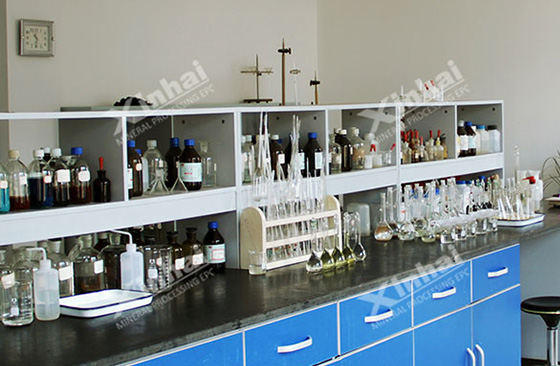
Collectors play a decisive role in the flotation process of quartz and feldspar. Their adsorption on the surface of feldspar or quartz directly affects the flotation separation effect of the two ores. Sodium petroleum sulfonate, sodium dodecyl sulfonate, sodium dodecyl sulfate, sodium oleate and various amine collectors are collectors used for flotation separation of quartz and feldspar. The types of collectors can be divided into quartz positive flotation reagents and reverse flotation reagents. When using hydrofluoric acid flotation process, amine collectors are often used to complete quartz reverse flotation. When using fluorine-free acid flotation process, the effect of using anionic and cationic combined collectors is better, but attention should be paid to the mixing ratio and concentration of collectors. These factors affect the flotation of feldspar and quartz.
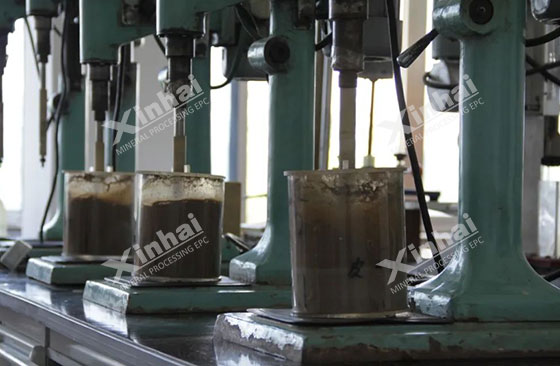
Adding a collector to the slurry can significantly expand the flotation difference between feldspar and quartz, but a small amount of the collector may be adsorbed on the surface of quartz or feldspar, resulting in a loss of quartz recovery and reducing the grade and quality of the quartz concentrate. purity. Adding regulators to the slurry can effectively regulate the slurry system, inhibit the floating of quartz or feldspar, and further expand the difference in floatability of the two ores.
When using hydrofluoric acid flotation method, hydrofluoric acid is used as the activator of feldspar, and then sulfuric acid, hydrochloric acid, etc. are used as pH adjusters, which can effectively separate feldspar and quartz, and preferentially float out feldspar.
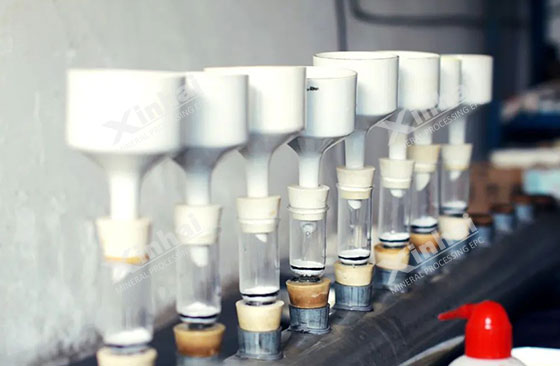
In addition to inhibiting quartz to enhance the flotation of feldspar, metal ions can also be added to inhibit feldspar, thereby achieving preferential flotation of quartz. Metal ions are hydrolyzed under high pH conditions, and the resulting metal hydroxide colloids can be adsorbed on the quartz surface, combined with collectors to form a hydrophobic film, promoting the adsorption of collectors on the quartz surface, thereby enhancing the hydrophobicity of the quartz surface and floating.
Multivalent metal ions (such as Ca²⁺, Mg²⁺, etc.) can be adsorbed not only on the quartz surface, but also on the feldspar surface, changing the electrical properties of the mineral surface and inhibiting the flotation of feldspar. However, in some cases, these metal ions may be adsorbed on the surfaces of quartz and feldspar at the same time, resulting in unsatisfactory separation of the two. In order to solve this problem, dispersants and inhibitors such as water glass and sodium hexametaphosphate are always added to the pulp to selectively inhibit the flotation of quartz, thereby achieving effective separation of feldspar and quartz.
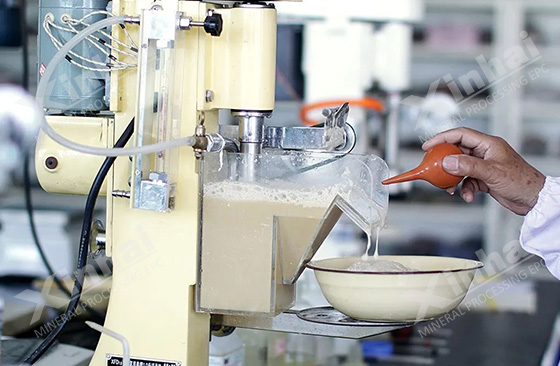
When choosing reasonable and correct quartz and feldspar flotation reagents, the following aspects should be considered:
1. Mineral surface properties: Quartz is a hydrophilic mineral, while feldspar exhibits strong hydrophobicity. Therefore, when selecting reagents, it is necessary to analyze the hydrophilicity and hydrophobicity of the minerals, so as to select suitable collectors and regulators.
2. Suitable collectors: Quartz usually uses chloride or organic acid collectors to enhance the hydrophilicity of quartz. Feldspar flotation often uses alkyl sulfonate collectors, which can enhance the hydrophobicity of feldspar and achieve separation from quartz.
3. pH adjustment: Properly adjusting the pH value of the pulp can optimize the effect of the flotation reagent. Quartz flotation usually requires acidic conditions, while feldspar needs to be floated under neutral or alkaline conditions. Therefore, choosing a suitable regulator to control the pH value of the pulp will help the separation of the two.
4. Use of inhibitors: In order to selectively inhibit the flotation of quartz or feldspar, inhibitors such as water glass can be used to inhibit the flotation of quartz and prevent it from floating together with feldspar.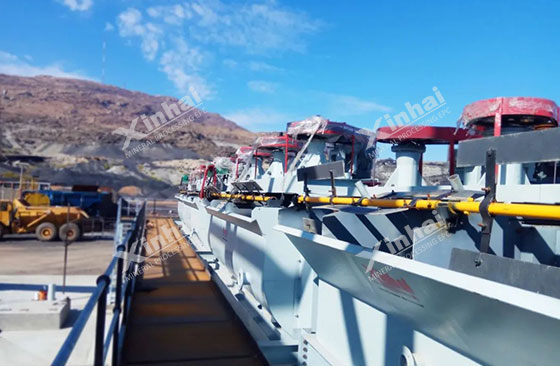
In summary, the flotation of quartz and feldspar requires the reasonable selection and optimization of the types and dosages of collectors, regulators, and activators, so as to improve the flotation separation efficiency and concentrate grade. Different flotation processes differ in the selection and use of flotation reagents. By adjusting the pH value of the slurry, enhancing the floatability differences of minerals, and using effective inhibitors, efficient separation of quartz and feldspar can be achieved. In actual production, it is necessary to flexibly adjust the flotation reagents formula according to the properties of the ore and process conditions to achieve the best sorting effect and economic benefits.
To find out more about our products and solutions, please fill out the form below and one of our experts will get back to you shortly.